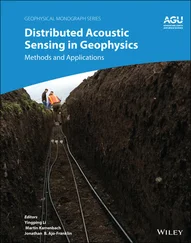10.3.2. Writing a Client and a Server
The DCE RPC system consists of a number of components, including languages, libraries, daemons and utility programs, among others. Together these make it possible to write clients and servers. In this section we will describe the pieces and how they fit together. The entire process of writing and using an RPC client and server is summarized in Fig. 10-13.
Fig. 10-13.The steps in writing a client and a server.
In a client/server system, the glue that holds everything together is the interface definition. This is effectively a contract between the server and its clients, specifying the services that the server is offering to the clients.
The concrete representation of this contract is a file, the interface definition file, which lists all the procedures that the server allows its clients to invoke remotely. Each procedure has a list of the names and types of its parameters and of its result. Ideally, the interface definition should also contain a formal definition of what the procedures do, but such a definition is beyond the current state of the art, so the interface definition just defines the syntax of the calls, not their semantics. At best the writer can add a few comments describing what he hopes the procedures will do.
Interface definitions are written in a language brilliantly named the Interface Definition Language, or IDL. It permits procedure declarations in a form closely resembling function prototypes in ANSI C. IDL files can also contain type definitions, constant declarations, and other information needed to correctly marshal parameters and unmarshal results.
A crucial element in every IDL file is an identifier that uniquely identifies the interface. The client sends this identifier in the first RPC message and the server verifies that it is correct. In this way, if a client inadvertently tries to bind to the wrong server, or even to an older version of the right server, the server will detect the error and the binding will not take place.
Interface definitions and unique identifiers are closely related in DCE. As illustrated in Fig. 10-13, the first step in writing a client/server application is usually calling the uuidgen program, asking it to generate a prototype IDL file containing an interface identifier guaranteed never to be used again in any interface generated anywhere by uuidgen. Uniqueness is ensured by encoding in it the location and time of creation. It consists of a 128-bit binary number represented in the IDL file as an ASCII string in hexadecimal.
The next step is editing the IDL file, filling in the names of the remote procedures and their parameters. It is worth noting that RPC is not totally transparent — for example, the client and server cannot share global variables — but the IDL rules make it impossible to express constructs that are not supported.
When the IDL file is complete, the IDL compiler is called to process it. The output of the IDL compiler consists of three files:
1. A header file (e.g., interface.h, in C terms).
2. The client stub.
3. The server stub.
The header file contains the unique identifier, type definitions, constant definitions, and function prototypes. It should be included (using # include) in both the client and server code.
The client stub contains the actual procedures that the client program will call. These procedures are responsible for collecting and packing the parameters into the outgoing message and then calling the runtime system to send it. The client stub also handles unpacking the reply and returning values to the client.
The server stub contains the procedures called by the runtime system on the server machine when an incoming message arrives. These, in turn, call the actual server procedures that do the work.
The next step is for the application writer to write the client and server code. Both of these are then compiled, as are the two stub procedures. The resulting client code and client stub object files are then linked with the runtime library to produce the executable binary for the client. Similarly, the server code and server stub are compiled and linked to produce the server's binary. At runtime, the client and server are started to make the application run.
10.3.3. Binding a Client to a Server
Before a client can call a server, it has to locate the server and bind to it. Naive users can ignore the binding process and let the stubs take care of it automatically, but binding happens nevertheless. Sophisticated users can control it in detail, for example, to select a specific server in a particular distant cell. In this section we will describe how binding works in DCE.
The main problem in binding is how the client locates the correct server. In theory, broadcasting a message containing the unique identifier to every process in every cell and asking all servers for it to please raise their hands might work (security considerations aside), but this approach is so slow and wasteful that it is not practical. Besides, not all networks support broadcasting.
Instead, server location is done in two steps:
1. Locate the server's machine.
2. Locate the correct process on that machine.
Different mechanisms are used for each of these steps. The need to locate the server's machine is obvious, but the problem with locating the server once the machine is known is more subtle. Basically, what it comes down to is that for a client to communicate reliably and securely with a server, a network connection is generally required. Such a connection needs an endpoint, a numerical address on the server's machine to which network connections can be attached and messages sent. Having the server choose a permanent numerical address is risky, since another server on the same machine might accidentally choose the same one. For this reason, endpoints can be dynamically assigned, and a database of (server, endpoint) entries is maintained on each server machine by a process called the RPC daemon, as described below.
The steps involved in binding are shown in Fig. 10-14. Before it becomes available for incoming requests, the server must ask the operating system for an endpoint. It then registers this endpoint with the RPC daemon. The RPC daemon records this information (including which protocols the server speaks) in the endpoint table for future use. The server also registers with some cell directory server, passing it the number of its host.
Fig. 10-14.Client-to-server binding in DCE.
Now let us look at the client side. In the simplest case, at the time of the first RPC, the client stub asks the cell directory server to find it a host running an instance of the server. The client then goes to the RPC daemon, which has a well-known endpoint, and asks it to look up the endpoint (e.g., TCP port) in its endpoint table. Armed with this information, the RPC can now take place. On subsequent RPCs this lookup is not needed. DCE also gives clients the ability to do more sophisticated searches for a suitable server when that is needed. Authenticated RPC is also an option. We will discuss authentication and protection later in this chapter.
10.3.4. Performing an RPC
The actual RPC is carried out transparently and in the usual way. The client stub marshals the parameters and passes the resulting buffer (possibly in chunks) to the runtime library for transmission using the protocol chosen at binding time. When a message arrives at the server side, it is routed to the correct server based on the endpoint contained in the incoming message. The runtime library passes the message to the server stub, which unmarshals the parameters and calls the server. The reply goes back by the reverse route.
Читать дальше












